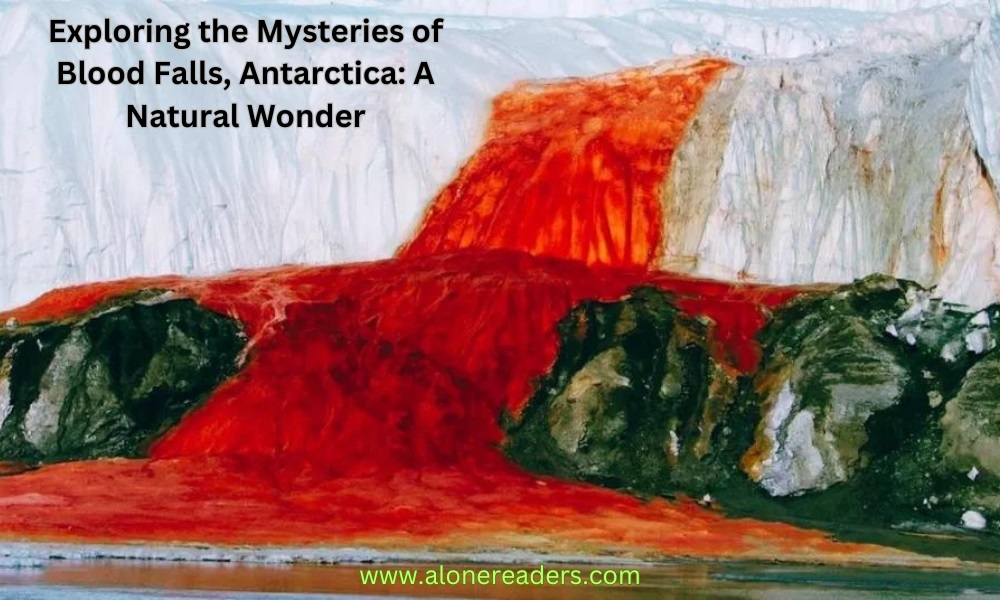
Deep in the heart of the Antarctic, a curious and striking phenomenon occurs. Amid the vast expanses of white and blue, a flow of deep red liquid seeps through the ice, creating a startling contrast against the pristine backdrop. Known as the Blood Falls, this natural marvel has captured the imagination of scientists, explorers, and nature enthusiasts alike.
The Blood Falls were first discovered in 1911 by Australian geologist Griffith Taylor, who initially mistook the red coloration for a type of algae. However, as scientific understanding progressed, it became clear that this red hue was due to something far more intriguing. The falls are a hypersaline, iron-rich brine that flows from the Taylor Glacier. The iron, upon contact with air, oxidizes and takes on a rust-like color, giving the waterfall its blood-red appearance.
The source of the Blood Falls is a subglacial lake, lying beneath the Taylor Glacier. This lake is unique due to its high saline content, which prevents it from freezing despite the sub-zero temperatures of its environment. Researchers have found that the lake’s water is about three times saltier than sea water. This extreme salinity lowers the freezing point of the water, enabling it to remain liquid even in the harsh Antarctic climate.
The discovery of microorganisms living in the lake's harsh conditions has also captivated the scientific community. These microbes have adapted to survive in an environment with no light, very little oxygen, and extreme cold. Their existence is a testament to the incredible resilience of life and has implications for our understanding of life in extreme environments on Earth and potentially on other planets.
The geology of the Blood Falls and its surrounding areas is equally fascinating. The Taylor Glacier, which feeds the falls, is a polar glacier, and its slow-moving ice exerts pressure on the trapped lake below. This pressure and the unique configuration of the glacier and the underlying terrain contribute to the periodic release of the iron-rich water. As it emerges, it stains the stark white ice with its signature red hue.
The study of Blood Falls has contributed significantly to our understanding of climate change and glacial movement. The flow of the falls and the conditions within the subglacial lake are indicators of the changing environment and provide valuable data for climate scientists. By studying these natural phenomena, researchers can gain insights into the past climate of Earth and make predictions about future changes.
Despite its remote location, the Blood Falls have become a symbol of the mysteries and wonders of the natural world. The falls are a reminder of the undiscovered and unexplained phenomena that still exist on our planet. They challenge our understanding of life and its adaptability, offering a unique glimpse into an environment that is both alien and familiar.
Photographers and adventurers who have visited the site describe it as a surreal experience. The contrast of the crimson against the white and blue of the Antarctic landscape is visually stunning. It's a scene that is not only a feast for the eyes but also stirs the imagination and curiosity.
In conclusion, the Blood Falls of Antarctica is more than just a visual spectacle; it's a portal into a world of scientific discovery and wonder. Its unique characteristics – the iron-rich, saline water, the resilient microorganisms, and the dramatic, blood-red cascading falls – all come together to create a natural phenomenon that is both beautiful and scientifically significant. The falls invite us to explore, question, and marvel at the mysteries of our natural world, reminding us that even in the most remote and inhospitable places, life finds a way to thrive.